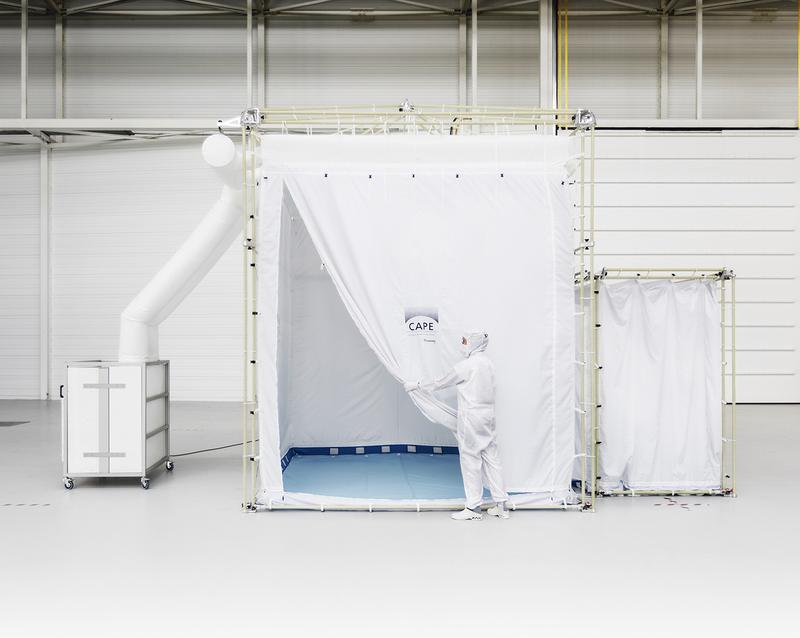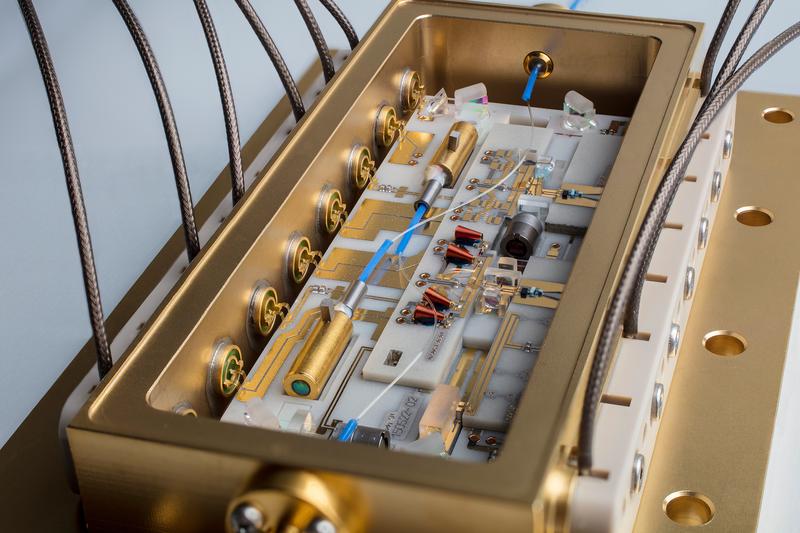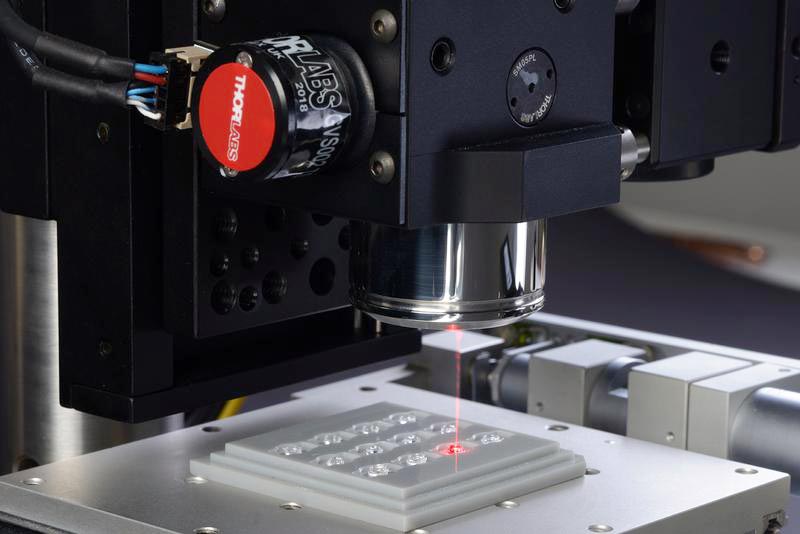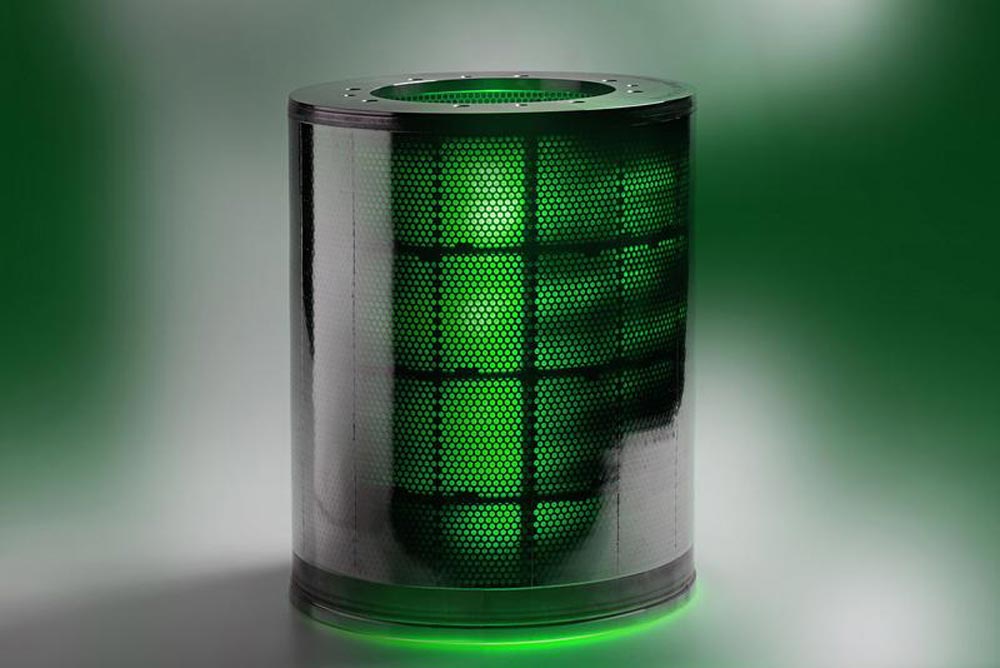

CAPE® is a mobile, tent-like cleanroom system developed by scientists at Fraunhofer IPA which can be put together within less than an hour.
Fraunhofer IPA / Photo: Rainer Bez
Fraunhofer IPA is to exhibit at a total of five stands in three separate exhibition halls at this year’s Hannover Messe, all of which will provide answers to the big questions that have arisen from the societal mega-trend of mass personalization, the mass production of individualized products:
How can companies cost-effectively manufacture an increasingly diverse range of products in ever smaller batches? How can production be adapted within a short space of time? How can errors and equipment malfunctions be avoided? How can man and machine work together effectively?
Cleanroom to go
CAPE® is a mobile, tent-like cleanroom system developed by scientists at Fraunhofer IPA which can be put together within less than an hour in both indoor and outdoor weather-proof areas. CAPE® protects sensitive products during the manu- facturing process and also safeguards them from cross-contamination. Moreover, the construction provides a suitable area where equipment and products can be sterilized.
Thanks to this “cleanroom on demand”, manufacturers who need to ensure that their finished products are free from contamination no longer need a clean and sterile environment to be permanently available; now, all they require is a mobile, contamination-free production environment which enables air purity in ISO classes 1–9.
The potential application areas of this lightweight construction are endless: Chip production, medical technology, the food industry and satellite installation, to name but a few. The automobile industry can also benefit from the compact “cleanroom on demand”, such as in battery cell or fuel cell production.
“CAPE® can even be used in crisis zones. For example, it can be used to prepare a clean and sterile environment where there is no on-site operating room”, says Udo Gommel, Head of the department Ultraclean Technology and Micromanufacturing at Fraunhofer IPA.
You can find CAPE® in Hall 17 at Stand C83.
How a shoe is made: Hand in hand with a robot
Mass products are a thing of the past: For years, the industrial sector has had to manufacture products in ever smaller batches whilst at the same time making these products ever more diverse. The result of this development is mass personalization, the mass-production of personalized products. Constant sensor improvements have enabled people and robots to enter into a joint collaboration on the factory floor, with man and machine working hand-in-hand, both bringing their own strengths to the table.
At the Hannover Messe, Reutlingen Industrie 4.0 Center, a cooperation between Fraunhofer IPA and Fraunhofer IAO and the ESB Business School at Reutlingen University, will bring together both trends in a single exhibition: Visitors to the stand will be able to manufacture personalized sandals in tandem with a collaborative robot. Using a configurator, they assemble the individual components according to their personal preferences and specify their shoe size before manufacturing the sandals hand in hand with the robot.
You can find Reutlingen Industrie 4.0 Center in Hall 6 at Stand C18.
Partially automated assembly assistance system
Up until now, many tasks in the assembly process have needed to be completed manually for technical or financial reasons. In order to support workers in these repetitive and physically strenuous tasks, and in order to prevent errors from occurring, Fraunhofer IPA, together with four industry partners, has developed an “adaptive assembly assistant and interaction system using 3D scene analysis and intuitive human-technology-communication” (MonSiKo).
Its smart algorithms and powerful 3D sensors enable this partially automated assembly assistant system to recognize which step of the procedure is being carried out and intervene in the event of an error. For example, if the worker picks up the wrong component, a red light appears. “People maintain overall control of the process”, says Christian Jauch from the department Machine Vision and Signal Processing at Fraunhofer IPA. “Should they wish to adapt the procedure, the assistance system does not prevent them.” The worker receives detailed instructions on the touch-screen; he/she simply swipes the screen, and the next step appears, also making this a more straightforward method of learning new processes. As an alternative to the touch-screen, MonSiKo understands verbal commands such as “continue” or “finished” and can provide the information that is on the screen in verbal form.
Visitors to the Hannover Messe have the opportunity to try out MonSiKo for themselves via a demonstrator. Under supervision, they assemble a small plastic elephant comprising three different components. These components undergo ultrasonic welding before a robotic arm steers and shakes the elephant against an acoustic sensor. If no rattling is detected by the robot, everything has been assembled and welded correctly.
You can find MonSiKo in Hall 2 at Stand B22.
SeRoNet – the service robot network
The aim of the joint project SeRoNet is to bring commercial service robotics solutions onto the market in a faster and more efficient manner. An online intermediary platform has been created for this very purpose, which can be used by component manufacturers and systems integrators in order to develop solutions to problems encountered by the end-user. All those involved cooperate via the platform and the hardware and software, which have been developed in line with Industrie 4.0, provide uniform interfaces. As a result, it will be possible to create application-specific robotic systems without the need for repeated iterations.
By way of a simplified logistics task, SeRoNet is to demonstrate how exactly this cooperative development will work and how easy it will be in the future to compile and modify comprehensive solutions using modular components, all thanks to the SeRoNet tools. The central exhibits are the software tools for component and system development and the SeRoNet intermediary platform, where the future providers and users of service robotics solutions have the opportunity to specify and carry out collaborative projects. Visitors to the trade fair can try out in person both the software tools and the platform at two terminals as well as familiarize themselves with the user interfaces, with which they can create complete systems by assembling application-specific components.
A platform can only truly exist when lots of people use it. Therefore, SeRoNet is planning a public appeal for as soon as the summer of this year. The aim would be for interested parties to receive grants in order to be able to participate on the platform. Not only will this provide a new sales opportunity for component manufacturers but in addition, system integrators will gain customers for their services and end users will have ready-to-use service robotics applications. The project itself will be carried out using three pilot demonstrators with SeRoNet technologies: A commissioning robot for the pharmaceutical industry, a smart hospital trolley which prepares care utensils when required and a modifiable assembly line in which modular robots combine flexibly automated and manual tasks.
You can find SeRoNet in Hall 2 at Stand C28.
RoboPORT – platform for co-creating service robots
RoboPORT is an interdisciplinary developer platform which enables the development of service robotics on the basis of crowd engineering. The platform helps developers from both the private and commercial sectors to come up with innovations via a collaborative development approach and to effectively implement these in prototypes. In particular, the platform community supports companies through the entire process, from the generation of ideas for robotic applications and conceptual solutions to the creation and validation of the prototype. To this end, RoboPORT offers a pool of talent that is immediately ready to use for project-focused engineering processes. At the Hannover Messe, RoboPORT demonstrates two examples of open-source projects which the platform is helping to advance: The mobile robotic platform “rob@work [mini]” and the humanoid robot “Roboy”.
The entire design and development process is handled by the RoboPORT platform. Crowd-engineering and co-creation generate ideas and provide the technologies and experts for each project, speeding up the development of robotic innovations. A web platform for robotics projects is due to be completed by 2020, offering developer tools, a library for open-source robotics and project management tools, enabling collaboration amongst all participants.
You can find RoboPORT in Hall 2 at Stand C28.
Fraunhofer Initiative Smart Maintenance
What is the solution for rising consumer demand? The answer is innovative products, efficient processes and seamless production flows in complex systems. An important component of this is maintenance and repair which uses interlinked machines, sensors and artificial intelligence in order to detect errors before they occur, avoiding costly malfunctions. Last year, together with eight additional institutes, Fraunhofer IPA launched the Fraunhofer Initiative Smart Maintenance with the aim of ensuring knowledge transfer of applied industrial research, while there are also future plans for workshops and collaborative research projects. The initiative is introduced at the Fraunhofer production association trade fair stand. Here, visitors to the trade fair can learn about the topic of smart maintenance in a fun way through a quiz duel prepared by the researchers.
You can find the Fraunhofer Initiative Smart Maintenance in Hall 17 at Stand C24.
Hannes Weik
Phone +49 711 970-1664
hannes.weik@ipa.fraunhofer.de
Fraunhofer Institute for Manufacturing Engineering and Automation IPA
https://www.ipa.fraunhofer.de/en/press/hannover-messe-2019.html












